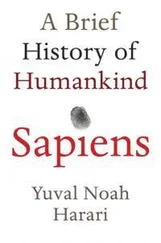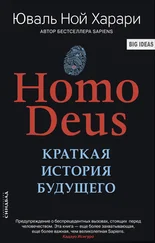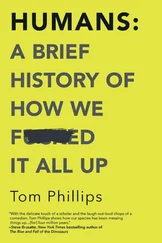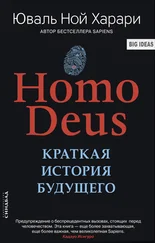31. Naveh, ‘Changes in the Perception of Animals and Plants’, 11.
3 The Human Spark
1. ‘Evolution, Creationism, Intelligent Design’, Gallup, accessed 20 December 2014, http://www.gallup.com/poll/21814/evolution-creationism-intelligent-design.aspx; Frank Newport, ‘In US, 46 per cent Hold Creationist View of Human Origins’, Gallup, 1 June 2012, accessed 21 December 2014, http://www.gallup.com/poll/155003/hold-creationist-view-human-origins.aspx.
2. Gregg, Are Dolphins Really Smart? , 82–3.
3. Stanislas Dehaene, Consciousness and the Brain: Deciphering How the Brain Codes Our Thoughts (New York: Viking, 2014); Steven Pinker, How the Mind Works (New York: W. W. Norton, 1997).
4. Dehaene, Consciousness and the Brain .
5. Pundits may point to Gödel’s incompleteness theorem, according to which no system of mathematical axioms can prove all arithmetic truths. There will always be some true statements that cannot be proven within the system. In popular literature this theorem is sometimes hijacked to account for the existence of mind. Allegedly, minds are needed to deal with such unprovable truths. However, it is far from obvious why living beings need to engage with such arcane mathematical truths in order to survive and reproduce. In fact, the vast majority of our conscious decisions do not involve such issues at all.
6. Christopher Steiner, Automate This: How Algorithms Came to Rule Our World (New York: Penguin, 2012), 215; Tom Vanderbilt, ‘Let the Robot Drive: The Autonomous Car of the Future is Here’, Wired , 20 January 2012, accessed 21 December 2014, http://www.wired.com/2012/01/ff_autonomouscars/all/; Chris Urmson, ‘The Self-Driving Car Logs More Miles on New Wheels’, Google Official Blog, 7 August 2012, accessed 23 December 2014, http://googleblog.blogspot.hu/2012/08/the-self-driving-car-logs-more-miles-on.html; Matt Richtel and Conor Dougherty, ‘Google’s Driverless Cars Run into Problem: Cars with Drivers’, New York Times , 1 September 2015, accessed 2 September 2015, http://www.nytimes.com/2015/09/02/technology/personaltech/google-says-its-not-the-driverless-cars-fault-its-other-drivers.html?_r=1.
7. Dehaene, Consciousness and the Brain .
8. Ibid., ch. 7.
9. ‘The Cambridge Declaration on Consciousness’, 7 July 2012, accessed 21 December 2014, https://web.archive.org/web/20131109230457/http://fcmconference.org/img/CambridgeDeclarationOnConsciousness.pdf.
10. John F. Cyran, Rita J. Valentino and Irwin Lucki, ‘Assessing Substrates Underlying the Behavioral Effects of Antidepressants Using the Modified Rat Forced Swimming Test’, Neuroscience and Behavioral Reviews 29:4–5 (2005), 569–74; Benoit Petit-Demoulière, Frank Chenu and Michel Bourin, ‘Forced Swimming Test in Mice: A Review of Antidepressant Activity’, Psychopharmacology 177:3 (2005), 245–55; Leda S. B. Garcia et al., ‘Acute Administration of Ketamine Induces Antidepressant-like Effects in the Forced Swimming Test and Increases BDNF Levels in the Rat Hippocampus’, Progress in Neuro-Psychopharmacology and Biological Psychiatry 32:1 (2008), 140–4; John F. Cryan, Cedric Mombereau and Annick Vassout, ‘The Tail Suspension Test as a Model for Assessing Antidepressant Activity: Review of Pharmacological and Genetic Studies in Mice’, Neuroscience and Behavioral Reviews 29:4–5 (2005), 571– 625; James J. Crowley, Julie A. Blendy and Irwin Lucki, ‘Strain-dependent Antidepressant-like Effects of Citalopram in the Mouse Tail Suspension Test’, Psychopharmacology 183:2 (2005), 257–64; Juan C. Brenes, Michael Padilla and Jaime Fornaguera, ‘A Detailed Analysis of Open-Field Habituation and Behavioral and Neurochemical Antidepressant-like Effects in Postweaning Enriched Rats’, Behavioral Brain Research 197:1 (2009), 125–37; Juan Carlos Brenes Sáenz, Odir Rodríguez Villagra and Jaime Fornaguera Trías, ‘Factor Analysis of Forced Swimming Test, Sucrose Preference Test and Open Field Test on Enriched, Social and Isolated Reared Rats’, Behavioral Brain Research 169:1 (2006), 57–65.
11. Marc Bekoff, ‘Observations of Scent-Marking and Discriminating Self from Others by a Domestic Dog ( Canis familiaris ): Tales of Displaced Yellow Snow’, Behavioral Processes 55:2 (2011), 75–9.
12. For different levels of self-consciousness, see: Gregg, Are Dolphins Really Smart? , 59–66.
13. Carolyn R. Raby et al., ‘Planning for the Future by Western Scrub Jays’, Nature 445:7130 (2007), 919–21.
14. Michael Balter, ‘Stone-Throwing Chimp is Back – and This Time It’s Personal’, Science , 9 May 2012, accessed 21 December 2014, http://news.sciencemag.org/2012/05/stone-throwing-chimp-back-and-time-its-personal; Sara J. Shettleworth, ‘Clever Animals and Killjoy Explanations in Comparative Psychology’, Trends in Cognitive Sciences 14:11 (2010), 477–81.
15. Gregg, Are Dolphins Really Smart? ; Nicola S. Clayton, Timothy J. Bussey and Anthony Dickinson, ‘Can Animals Recall the Past and Plan for the Future?’, Nature Reviews Neuroscience 4:8 (2003), 685–91; William A. Roberts, ‘Are Animals Stuck in Time?’, Psychological Bulletin 128:3 (2002), 473–89; Endel Tulving, ‘Episodic Memory and Autonoesis: Uniquely Human?’, in The Missing Link in Cognition: Evolution of Self-Knowing Consciousness , ed. Herbert S. Terrace and Janet Metcalfe (Oxford: Oxford University Press), 3–56; Mariam Naqshbandi and William A. Roberts, ‘Anticipation of Future Events in Squirrel Monkeys ( Saimiri sciureus ) and Rats ( Rattus norvegicus ): Tests of the Bischof–Kohler Hypothesis’, Journal of Comparative Psychology 120:4 (2006), 345–57.
16. I. B. A. Bartal, J. Decety and P. Mason, ‘Empathy and Pro-Social Behavior in Rats’, Science 334:6061 (2011), 1427–30; Gregg, Are Dolphins Really Smart? , 89.
17. Christopher B. Ruff, Erik Trinkaus and Trenton W. Holliday, ‘Body Mass and Encephalization in Pleistocene Homo ’, Nature 387:6629 (1997), 173–6; Maciej Henneberg and Maryna Steyn, ‘Trends in Cranial Capacity and Cranial Index in Subsaharan Africa During the Holocene’, American Journal of Human Biology 5:4 (1993), 473–9; Drew H. Bailey and David C. Geary, ‘Hominid Brain Evolution: Testing Climatic, Ecological, and Social Competition Models’, Human Nature 20:1 (2009), 67–79; Daniel J. Wescott and Richard L. Jantz, ‘Assessing Craniofacial Secular Change in American Blacks and Whites Using Geometric Morphometry’, in Modern Morphometrics in Physical Anthropology: Developments in Primatology: Progress and Prospects , ed. Dennis E. Slice (New York: Plenum Publishers, 2005), 231–45.
18. See also Edward O. Wilson, The Social Conquest of the Earth (New York: Liveright, 2012).
19. Cyril Edwin Black (ed.), The Transformation of Russian Society: Aspects of Social Change since 1861 (Cambridge, MA: Harvard University Press, 1970), 279.
20. NAEMI09, ‘Nicolae Ceauşescu LAST SPEECH (english subtitles) part 1 of 2’, 22 April 2010, accessed 21 December 2014, http://www.youtube.com/watch?v=wWIbCtz_Xwk.
21. Tom Gallagher, Theft of a Nation: Romania since Communism (London: Hurst, 2005).
22. Robin Dunbar, Grooming, Gossip, and the Evolution of Language (Cambridge, MA: Harvard University Press, 1998).
23. TVP University, ‘Capuchin Monkeys Reject Unequal Pay’, 15 December 2012, accessed 21 December 2014, http://www.youtube.com/watch?v=lKhAd0Tyny0.
24. Quoted in Christopher Duffy, Military Experience in the Age of Reason (London: Routledge, 2005), 98–9.
Читать дальше
Конец ознакомительного отрывка
Купить книгу












